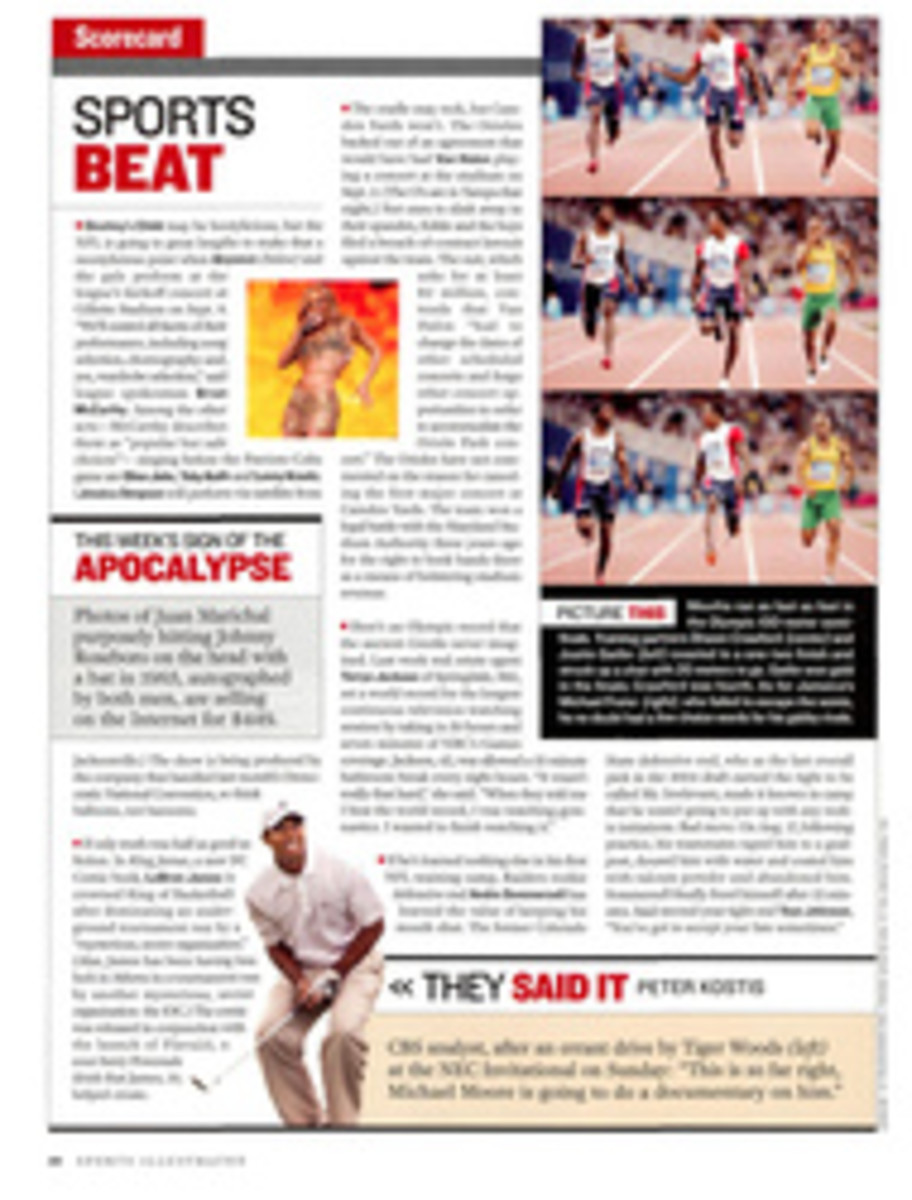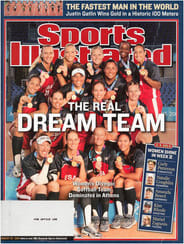
Battle Tested
Plenty of freshmen enter college like racehorses, raring to burst onto the national scene. But not long after tailback Anthony Davis arrived at Wisconsin from Plainfield (N.J.) High in 2000, he was ready to go home. Not only did he have to contend with homesickness and stiff competition at his position, but he also had to cope with the deaths of two close friends from Plainfield who were killed in separate incidents within a 22-day span that August. "I haven't talked about it, but that first camp was a disaster," he says.
Davis often moped through practices his first year, and he looked nothing like the player who had won the high school Heisman as a senior. Says Badgers offensive coordinator Brian White, "We all thought Anthony was a total bust."
But misery gave way to motivation, and before long, Davis says, it inspired him to "do things my friends would never have a chance to do." He redshirted his first year but became a starter the following season, during which he set an NCAA record for 100-yard rushing games by a freshman, with 10, and ran for a Big Ten--best 1,466 yards. The next season he rushed for 1,555 yards, joining '99 Heisman winner Ron Dayne as the only Badgers to rush for more than 1,000 yards in their freshman and sophomore years.
Last fall Davis's ability to persevere was tested again. After rushing for 414 yards in Wisconsin's first two games, he suffered a high-left-ankle sprain in a 23--5 loss to UNLV on Sept. 13. Davis missed five full games and parts of four others, but rather than brood about the injury, he threw himself into his schoolwork--he has a 3.0 GPA as an education major--and community service for his fraternity, for which he'll serve as president this year. "He took energy he was unable to use on the field and redirected it in healthy ways," says White. "That's not something many players are willing to do."
Now healthy, the 5'8", 194-pound Davis and the run-first Badgers should benefit from a veteran offensive line. "We'll hand Anthony the ball as many times as is necessary to win," says White. "We have a strong line, great receivers and a good quarterback [unproven sophomore John Stocco] to open things up for him."
Coming off a disappointing 7--6 season, the Badgers, who open with Central Florida on Sept. 4, will go as far as Davis carries them. If Wisconsin is in contention for the Big Ten title, Davis will most likely be in the thick of the Heisman Trophy race. But after all he's been through in Madison, Davis has learned to take expectations in stride. "I've never been one for polls," he said. "All I think about is getting back on the field."
Welcome Back
Here are five players who are ready to resume starring roles after missing significant time due to injuries in 2003.
FRANK GORE, Jr., RB, MIAMI
He rushed for 468 yards and four touchdowns last season before he suffered a torn ACL in his left knee, a year after tearing the ACL in his right knee.
MATT GROOTEGOED, Sr., LB, USC
Torn ligaments in his left ankle sidelined the Trojans' defensive leader and Butkus Award front-runner for four games last season.
MICHAEL MCGREW, Sr., WR, VIRGINIA
The Cavaliers' No. 1 receiver (27 catches for 428 yards in '02) sat out 2003 after breaking his leg last summer, but he's now quarterback Marques Hagans's top target.
LANCE MITCHELL, Sr., LB, OKLAHOMA
After leading the Sooners with 124 tackles in '02, Mitchell (left) tore the ACL in his left knee in the Sooners' third game last year; his position was filled by Teddy Lehman, who went on to win the Butkus Award.
WILL THOMPSON, Sr., DE, GEORGIA
In his last game before dislocating his left ankle in August 2003, Thompson had five tackles and two sacks in the Dawgs' Sugar Bowl win over Florida State.
COLOR PHOTO
DAVID BERGMAN (DAVIS)
The 5'8" Davis began his career with a pair of 1,000-yard seasons, but an ankle injury limited him to 682 in 2003.
COLOR PHOTO
TOM HAUCK/ICON SMI

